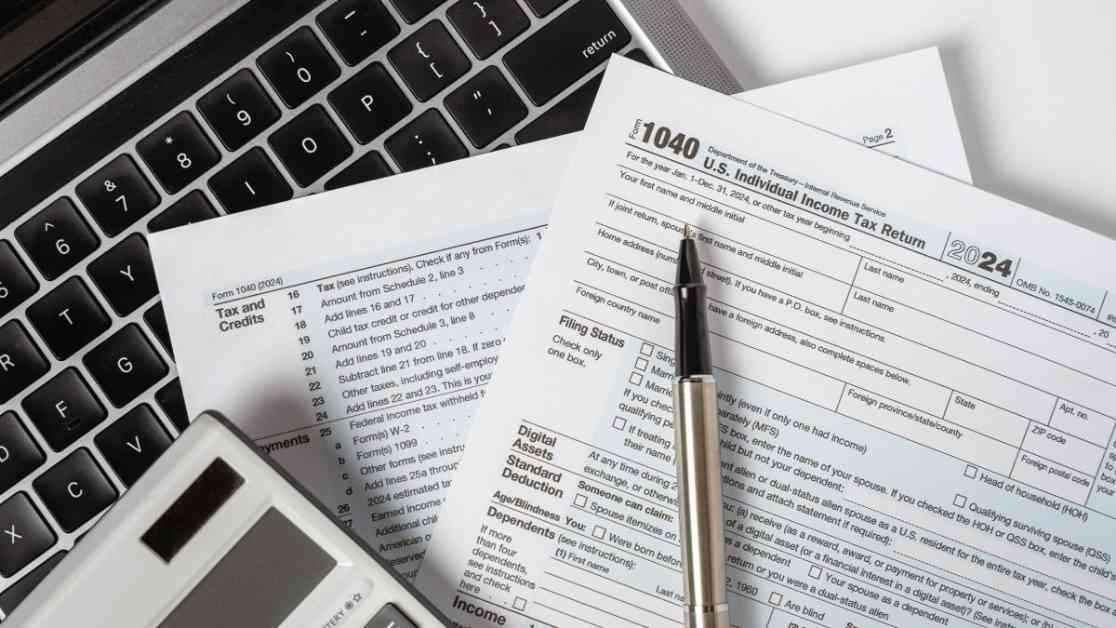Tax Deadline Approaching: What You Need to Know in 2025
As the clock ticks down to the looming April 15 tax deadline, it’s time to get your financial affairs in order. Whether you’re a seasoned taxpayer or someone who tends to procrastinate, here’s a comprehensive guide to navigating the tax season in 2025.
Meeting Your Tax Obligations
For many individuals, taxes are automatically deducted from their paychecks, pension payments, Social Security benefits, or other governmental payments. However, if you’re self-employed, part of the gig economy, a retiree, investor, or business owner, you may need to make estimated tax payments quarterly. This means ensuring that a portion of your income is set aside to cover your tax liabilities.
The April 15 deadline isn’t just for W-2 employees—it also applies to self-employed individuals, retirees, investors, and businesses who must make their first quarter estimated tax payments for the year 2025. So, if you fall into any of these categories, mark your calendars to avoid any penalties or interest.
Requesting a Tax Extension
If you find yourself scrambling to meet the tax deadline, you do have the option to request an extension. By filing an extension by April 15, you can push your filing deadline to October 15 without incurring penalties. However, it’s essential to note that an extension only gives you more time to file, not to pay. Any taxes due on April 15 must still be paid to avoid extra charges.
How to Request an Extension
There are three straightforward ways to request a tax extension if you need more time to file your taxes:
1. Utilize the IRS Free File program on IRS.gov to submit your extension request. By estimating your tax liability and meeting the deadline, you can secure an extension without any additional costs.
2. Pay what you owe online and select the extension option. By using an online payment platform, you can settle your tax liabilities and request an extension simultaneously.
3. Mail in Form 4868, Application for Automatic Extension of Time To File U.S. Individual Income Tax Return, to officially request an extension.
Automatic Extensions for Eligible Taxpayers
Some taxpayers are fortunate enough to receive automatic extensions without having to file a request. These include:
– Members of the military stationed outside the United States and Puerto Rico, who have until June 16 to file their taxes. However, tax payments are still due on April 15 to avoid additional charges.
– Individuals serving in combat zones, who are granted at least 180 days after leaving the combat zone to file their tax returns and settle any outstanding taxes.
– U.S. citizens and resident aliens living and working abroad, who receive an automatic two-month extension until June 16. Like others, they must pay any taxes due by April 15 to avoid interest.
– Taxpayers in federally declared disaster areas, who may also have an automatic extension to file and pay their taxes. For a list of these areas, refer to the IRS guidelines.
Closing Thoughts
As the tax deadline approaches, it’s crucial to stay informed and take the necessary steps to fulfill your obligations. Whether you’re filing as an employee, self-employed individual, retiree, investor, or business owner, understanding the nuances of tax season can help you navigate this process smoothly. By being proactive and staying organized, you can ensure a stress-free tax season and avoid any last-minute surprises. So, mark your calendar, review your financial records, and take the necessary steps to meet the April 15 deadline. Your future self will thank you for it.














